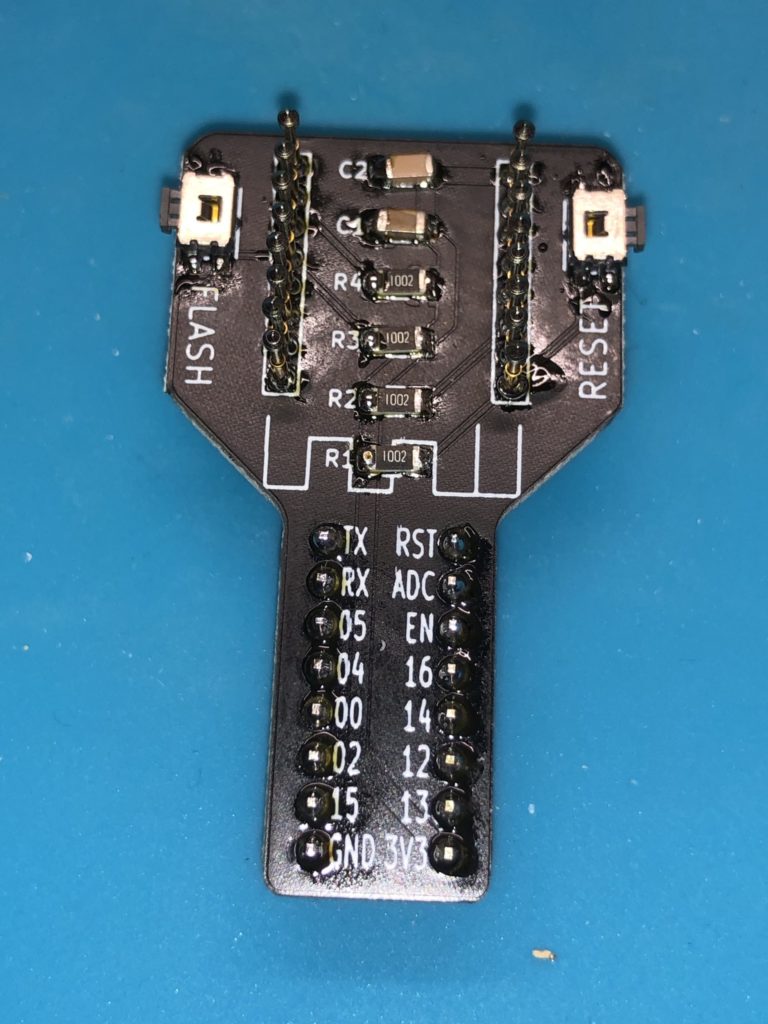Often I just make things because I like making them and enjoy developing my own solutions. But sometimes you can’t find the product you need so you have to create your own version. There are a few programming adapters for the ESP-12 but none of them really fits into a breadboard and I need one that allows me to flash and test an ESP-12 without soldering it in.
I need an easy and simple solution but also want it to have all needed components on board so I can just connect a serial adapter to flash it. At the same time I want to be able to use it for prototyping though so all pins have to be available. The biggest problem with the ESP-12 is it’s 2mm pitch on the solderpads which makes it incompatible with breadboards but the good part is that each solder pad has a through hole, too, so it’s ideal for being used with pogo pins. After finding small enough pogo pins that still had a wide enough head to give a solid connection, I designed a board around them and since I wanted to waste as little space as possible the ESP-12 Pogo Key was born.
Feel free to use my gerber files to order your own. I suggest getting at least 5 of them so you can stack a few for keeping the pins in position while soldering. In addition to the boards you need just a few cheap parts. All the SMD components are optional on the board and can be substituted with equivalent parts on a breadboard, so you can omit them if you don’t want to solder SMD.
- 16x P75-E2 Pogo Pins
- 2x 8 pin 2.54mm header
- 2x SMD Push Button type YD-3414
- 4x SMD Resistor 10kΩ, 1206
- 1x SMD Capacitor 10µF, 1206
- 1x SMD Capacitor 100nF, 1206
- A small spring clamp to hold the ESP in place
Everything else is fairly simple and standard so I guess I’ll let pictures speak:







Well done !